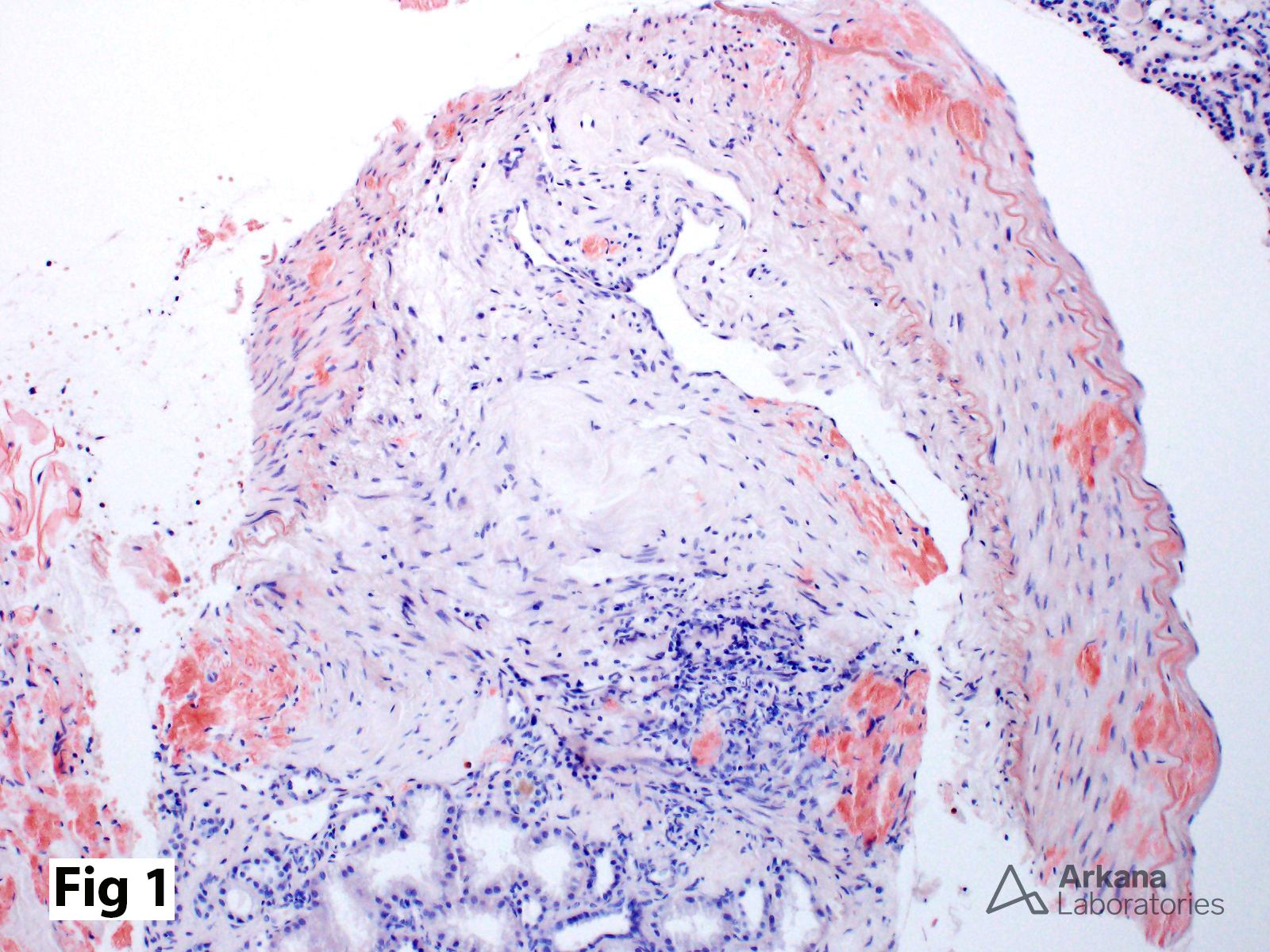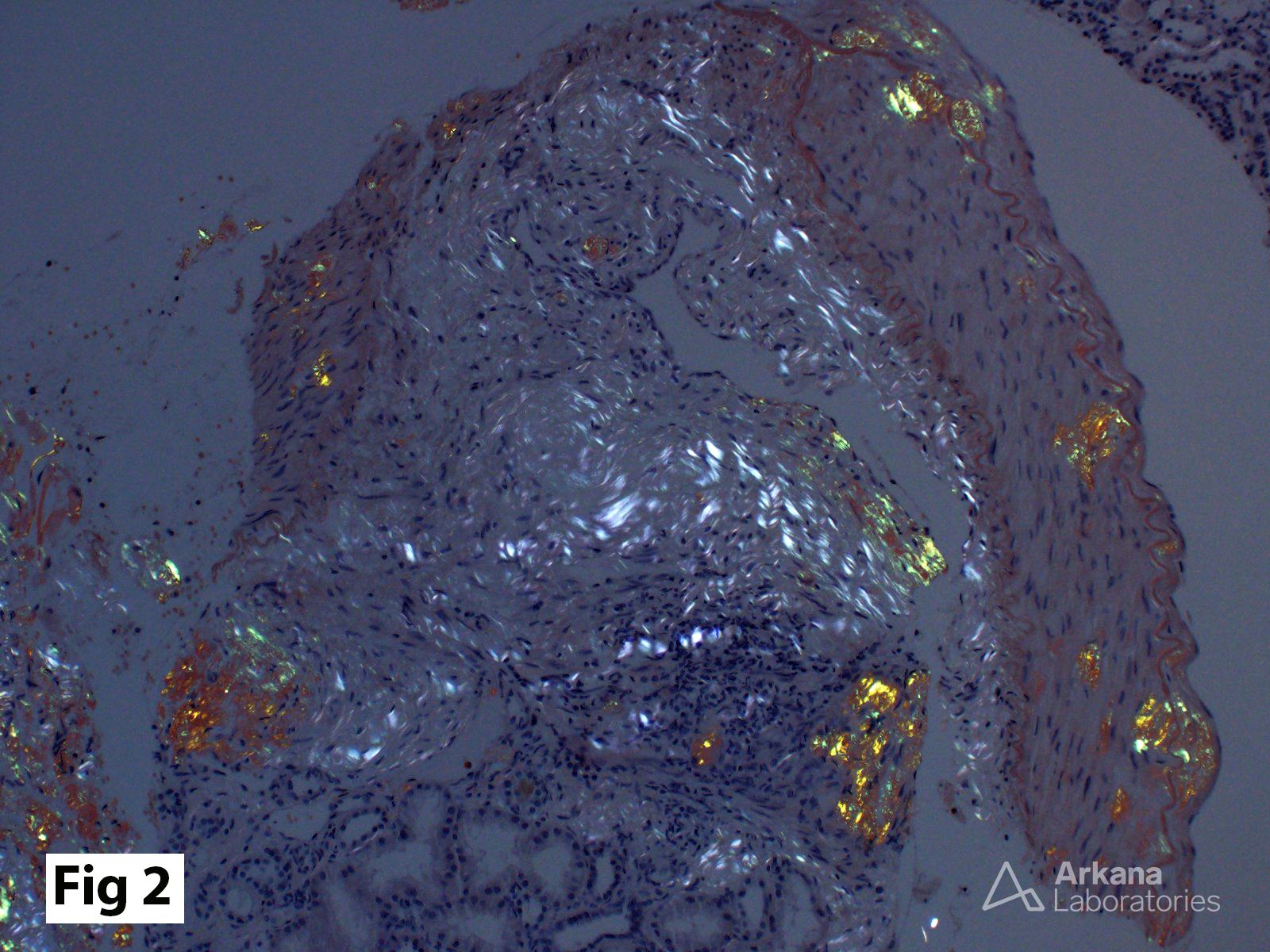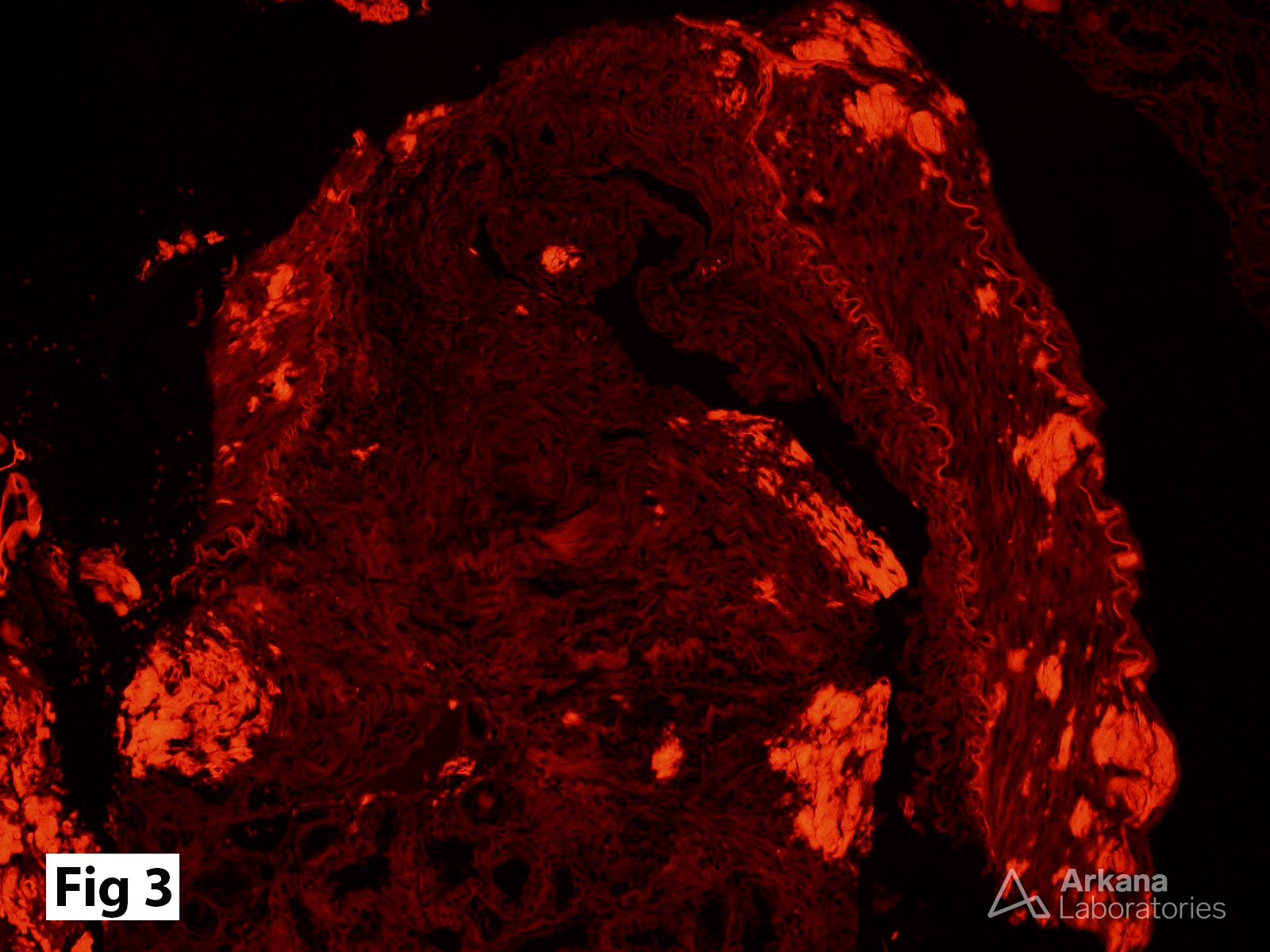Importance of the congo red stain
The ability to detect amyloid deposits in human tissue is the critical first step in making a diagnosis of amyloidosis. David P. Steensma, MD, offers readers a fascinating history of the Congo red stain (see references), which still remains the most widely used and cost-effective way to identify amyloid deposits in pathology specimens. Although reportedly first used to stain human tissue in 1886 (see H. Greisbach), it would not be until 1922 that the dye’s specificity for amyloid would be exploited (see H. Bennhold). And it would be another five years before the well-known “apple-green” birefringence of Congo red-stained amyloid deposits using polarized light was described by a Belgian neuropathologist in 1927 (see P. Divry). More recently, Clement and Truong have shown how fluorescence microscopy using a Texas red filter may enhance the identification of amyloid deposits in Congo red-stained tissue sections, especially when deposits are small.
- Figure 1: Congo red stain positive for amyloid, light microscopy
- Figure 2: Congo red stain, polarization microscopy showing “apple-green” birefringence
- Figure 3: Congo red stain, fluorescence microscopy with Texas red filter
References:
Steensma DP. “Congo” red: out of Africa? Arch Pathol Lab Med. 2001 Feb;125(2):250-2. PubMed PMID: 11175644. [https://pubmed.ncbi.nlm.nih.gov/11175644/]
Griesbach, H. Weitere untersuchungen über azofarbstoffe behufs tinction menschlicher und thierischer gewebe [Further studies of azo dyestuffs as a stain of human and animal tissues]. Zeitschrift für Wissenschaftliche Mikroskopie und für Mikroskopische Technik 1886. 3:358–385.
Bennhold, H. Eine spezifische amyloidfärbung mit Kongorot [Specific staining of amyloid with Congo red]. Münchener Medizinische Wochenschrifte 1922. 69:1537–1538.
Divry, P. Etude histochimique des plaques seniles [Histochemical study of senile plaques]. J Belge de Neurologie et de Psychiatrie 1927. 27:643–657.
Clement CG, Truong LD. An evaluation of Congo red fluorescence for the diagnosis of amyloidosis. Hum Pathol. 2014 Aug;45(8):1766-72. PMID: 24935061. [https://pubmed.ncbi.nlm.nih.gov/24935061/]
Quick note: This post is to be used for informational purposes only and does not constitute medical or health advice. Each person should consult their own doctor with respect to matters referenced. Arkana Laboratories assumes no liability for actions taken in reliance upon the information contained herein.




